German street photographer Siegfried Hansen: “Every good photo embodies certain characteristics of the photographer”
November 5, 2015
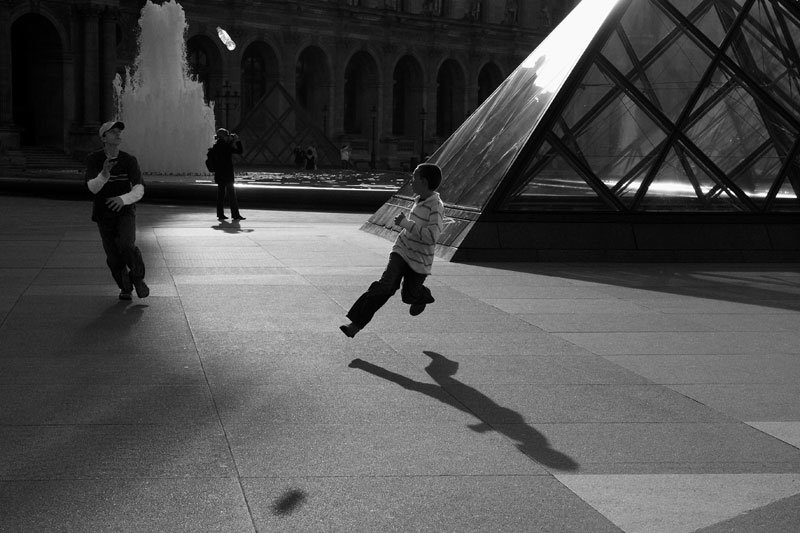 Siegfried Hansen is a German street photographer known for both his street photography and graphic urban photography. He has an acclaimed portfolio which traces visual compositions, form, graphics, and colours. This all encompasses his ‘Street Photography’ portfolio in which the main subjects are not humans and faces, but graphic connections and formal relations giving Hansen a unique repertoire. His works show the aesthetics of coincidence in the public sphere, and is always full of surprises, in which he captures the unexpected and aesthetically interesting parts of our European cities. Hansen’s work invites you to look again and again, and each time you will focus on something new.
Siegfried Hansen is a German street photographer known for both his street photography and graphic urban photography. He has an acclaimed portfolio which traces visual compositions, form, graphics, and colours. This all encompasses his ‘Street Photography’ portfolio in which the main subjects are not humans and faces, but graphic connections and formal relations giving Hansen a unique repertoire. His works show the aesthetics of coincidence in the public sphere, and is always full of surprises, in which he captures the unexpected and aesthetically interesting parts of our European cities. Hansen’s work invites you to look again and again, and each time you will focus on something new.
We were given the unique opportunity to discuss Hansen’s work and influences with him in an exclusive interview. Here our photography editor Nicola Cappleman talks to him about his photographic training and background as well as his artistic inspirations and the compositions of his work.
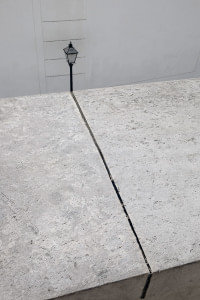 Could you talk briefly through your artistic career so far and how your interest in Photography started?
Could you talk briefly through your artistic career so far and how your interest in Photography started?
About 13 years ago, I was a “typical” snap shot photographer. I used to shoot a lot of sunsets with my Minolta X300 (anlog) in both black-and-white and colour. Then I visited an exhibition of Andre Kertesz, his pictures completely changed my way of looking at my own environment. I was fascinated by the way he captured moments and his ability to present them subjectively.
Since that day in 2002, wherever I go, I carry my camera with me so I can catch all the moments I see and like, in particular graphical image elements which represent harmony.
Do you remember the first photograph you ever took? Or your first artistic memory?
I was visiting a temple and was observing a traditional wedding celebration which was in progress. There was a lady being prepared for a picture by a photographer. The photographer got her ready by proofing her outfit and preparing her for the shot. The lady seemed quite nervous, and she was looking downward skeptically. When I saw her face in the mirror I knew this was the perfect moment for me to take this picture and capture the scene (seen below). I like it a lot, I creates a unique relationship with the viewer where s/he has to look 2 or 3 times to realise the content of the scene and what is going on in the picture.
This was the first place in which I tried to capture two (or more) different things in one picture at the same time.
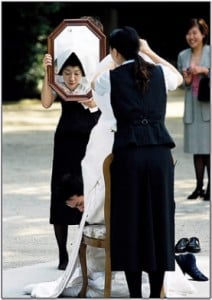
Could you describe your artistic process? Do you spontaneously shoot? Or do you set out with a theme or intention?
I did not receive formal academic training in art or photography. However, for the last 13 years I have taken photographs almost everyday. I have also extensively studied photographic literature; this allowed me to develop my own style and experiment with techniques of how to best frame graphical compositions the best. Therefore, I became skilled in capturing and realising situations that others may not be immediately aware of. I would also say that having a photographic memory helps me a lot. I don’t think that not having formal training has hindered me in any way, of course, there are many things you learn by training and discipline, but overall you should internalize both theory and technique to a point that you can fully concentrate on the exact moment when taking pictures. I navigate through Hamburg, my hometown, almost blindly on certain routes, focusing on things that are happening around me.
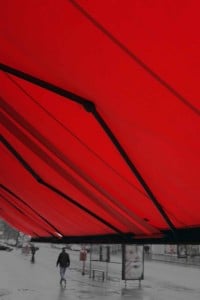
Your work acts not simply as an aesthetic representation of everyday life, but as a societal representation of graphic connections. Could you describe what you wish to explore and represent in your work?
It started with a passion to capture objects and things around me in a photographic way. I’m a big fan of the Bauhaus style, especially of artists such as Lyonel Feiniger or photographers like Ernst Haas or Andre Kertesz.
The first picture of this series showed a lantern poll with some duct tape strapped around it. It was taken in London. From then on I continued to look for these optical connections. This series in particular took over 6 years to be completed.
There is only the graphical aspect that links these pictures together. They happen because I emphasise on that kind of visual graphic.
Your work does not represent portrait photography which is unique in comparison to other street photographers. Could you explain your current project?
To me it is more interesting, but, simultaneously, also more difficult, to photograph people where their faces obscured or shadowy. You force the viewer of the picture to take a closer look and maybe to be puzzled or intrigued this creates a more intense a reaction from the viewer. This in itself would be an achievement for me. Privacy laws in relation to street photography are of course an issue you have to comply with working in Germany too, being a photographer. I always try to be abstract in my work and I think it is important to illustrate people in a respectful manner.
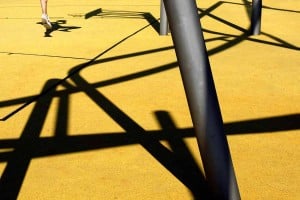
What inspires your artistic process?
That is not easy to answer. I’m not sure if my pictures reflect my personality. Every good photo embodies certain characteristics of the photographer. But probably those who know me well could answer this much better. As I mentioned, I do like the Bauhaus style as well as Lyonel Feininger. I was always fascinated by the complexity of the simple and the symmetry within the chaos.
Are there any photographers or other artists which inspire your work?
In the beginning I was heavily inspired by Andre Kertesz and Henry Cartier Bresson. Later by artists such as Ernst Haas and Ray K. Metzker. Painters such as Edward Hooper, Mondrian, and Lyonel Feininger definitely helped me to develop my own graphic style, especially the straightness and mirroring aspect which can be found in my work.
Does anywhere that you have lived or worked influence your work at all?
None , it is all self educated.
Where is your favourite place to photograph?
I would say both Hamburg and London.
Siegfried Hansen’s work was published in a book ‘Hold The Line’ (‘Published by Kettler Verlag’). Available to purchase here. The book is short listed for the Aperture Paris photo ‘first book’ prize. He will also be exhibiting work at the famous Galerie Freelens in Hamburg as from the 19th of November 2015. For more information about Siegfried Hansen and his work visit his website.
Please note that all images in this article remain Copyright of the photographer ©Siegfried Hansen. They have been reproduced with permission of the photographer. The State Of The Arts does not own these images.

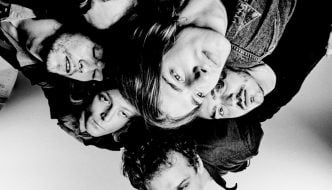
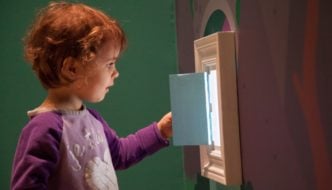
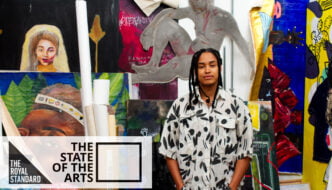
Comments